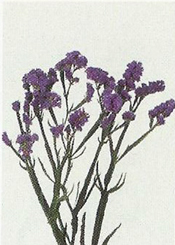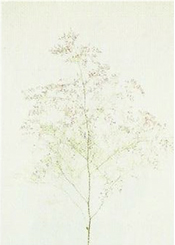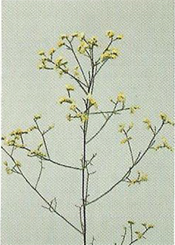





(Blue Star) (Beltlaard) (Confetti)
Limonium
Nome Botanico: Limonium.
Famiglia: Plumbaginaceae.
Breve Descrizione: La maggior parte delle specie attribuite a questo genere sono piante erbacee perenni, dotate di rizoma, alte da 10 a 70 cm. Poche specie sono erbe annuali o, all'opposto, veri e propri arbusti fino a 2 m d'altezza. Le foglie sono semplici, intere o lobate; la loro grandezza varia fortemente a seconda della specie. I fiori sono riuniti in infiorescenze vistose, di colore rosa, purpureo o violetto, più raramente bianco, giallo o azzurro. I singoli fiori sono piccoli (max 1 cm), regolari, dotati di 5 petali, 5 sepali e 5 stami. Il frutto è una piccola capsula contenente un solo seme.
Durata: Perenne.
Periodo Di Fioritura: Da giugno a settembre.
Area Di Origine: Mediterraneo, Asia.
Clima: Mite.
Uso: Diverse specie sono popolari per la realizzazione di giardini e generalmente viene chiamata "statice", soprattutto dagli addetti ai lavori. Vengono cresciuti per i fiori e l'aspetto del calice, che rimane sulla piante anche dopo che i fiori sono caduti. Sono conosciuti come "sempre vivi".
-> Clicca qui per vedere altre varietà... <-
Botanical Name: Limonium.
Family: Plumbaginaceae.
Brief Description: Most species attributed to this genus are herbaceous perennial, with a rhizome, high 10 to 70 cm. Few species are annual herbs or, conversely, real shrubs up to 2 m in height. The leaves are simple, entire or lobed; their size varies greatly depending on the species. The flowers are grouped in inflorescences showy, pink, purple or violet, rarely white, yellow or blue. The individual flowers are small (max 1 cm), regular, with five petals, five sepals and five stamens. The fruit is a small capsule containing a single seed.
Duration: Perennial.
Flowering Period: From June to September.
Area Of Origin: Mediterranean, Asia.
Climate: Mild.
Use: Several species are popular garden flowers; they are generally known to gardeners as statices. They are grown both for their flowers and for the appearance of the calyx, which remains on the plant after the true flowers have fallen, and are known as "everlasting flowers".
-> Click here to see more variety... <-
FIORI RECISI / CUT FLOWERS (GEN-FEB-MAR)
FIORI RECISI / CUT FLOWERS (APR-MAG-GIU)
FIORI RECISI / CUT FLOWERS (LUG-AGO-SET)
FIORI RECISI / CUT FLOWERS (OTT-NOV-DIC)